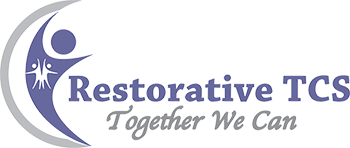Leading restoratively in schools refers to all the things we do to lead, guide and partner with our community (staff, students, parents, and community partners) to create the culture needed for every student to succeed socially and academically. Restorative leaders master the art of holding ourselves and others to a high level of accountability while providing a high level of support. Therefore, leading restoratively does not require more time. Instead, it requires a shift in how we spend our time and interact with our community. Some simple ways of leading restoratively can be summed up in three words: welcoming, present, and visible. In so doing, community members will be more transparent, open, and honest enabling us to build trust, learn creative ideas, and get to the root of problems quickly.
Welcoming
Having a welcoming presence requires authenticity, openness, and a genuine appreciation for all community members. When we are welcoming to others, they will be welcoming to us and one another. It’s contagious! Some signs of a welcoming presence include a warm and inviting smile, a sincere greeting, and a sense of comfort when interacting with others.
Present
Being present requires a conscious effort and refers to all the things we do to be in the moment. It means giving the person/group our undivided attention and typically results in more effective and efficient conversations. Human beings, regardless of age, know if we are present or not. When we are not present, people are either repetitive causing longer conversations or shut down causing us to miss their thoughts/perspective. When we make the conscious decision to be in the moment, we show our community members that they are valued and important. In turn, they value us and one another.
Visible
Being visible refers to physically being wherever our community members are (e.g. in the halls, outside, in the classroom, at a school function etc.) with the goal of building trust. I am not referring to the times that we are visible to complete our leadership duties (e.g. evaluate teachers, conduct walk-throughs, address a behavior concern). Instead, we are visible to show we care and are with them.
I used to work at a high school that served students at-risk of dropping out school, returning from incarceration or expulsion. While at this school for over 4 years, I never saw a physical fight and rarely heard a verbal altercation though most students entered with significant behavioral records. Our biggest asset was being welcoming, present, and visible because it helped us build the relationships needed to create the safe and supportive culture necessary for student success.
Most school leaders would agree that being welcoming, present, and visible are not innovative ideas, just good practice. However, we can get caught up in the “busy-ness of leading” causing us to forget the simple things. Therefore, let’s make a conscious effort to be and give ourselves gentle reminders (e.g. self-talk, note to self, wearing a band etc.). Since we interact with people throughout the day, the opportunities to practice are endless. So, let your light shine and your school community will help you create the culture needed for student success, and you will be well on your way to leading restoratively in school.





